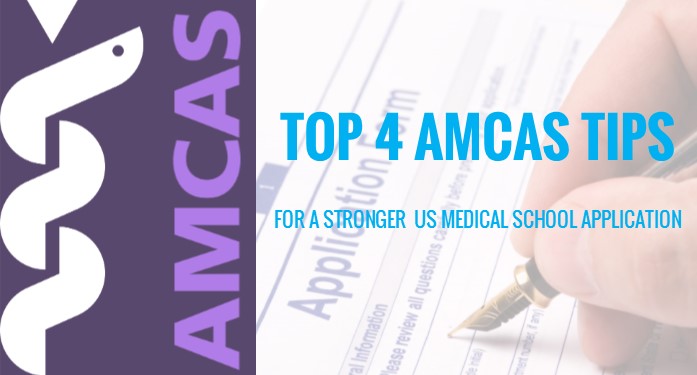
Top 4 AMCAS Tips for A Stronger US Medical School Application – Part 1
Think back to everything you have accomplished over the past four or more years to become the best medical school applicant you can be. How you fill out the AMCAS application may be just as important as those accomplishments. Here are some tips from my experience as a successful (and non-US citizen/permanent resident) applicant.
Tip #1: Target the right schools
If you are not a U.S. citizen/permanent resident, you will be held to tougher admissions standards. Some schools do not accept international students, and other than a handful of top-20 schools (i.e. Harvard, Stanford, Yale), most schools do not provide institutional financial aid to international students.
You cannot change your citizenship; but what can you do?
First, research to find schools with a track record of matriculating institutional students, and schools you could financially afford to enroll in if you were to be accepted (non-institutional financial aid options include MD/PhD programs, and Canadian or provincial government loans).
Next, be strategic in applying to the right tier and number of schools. The AAMC compiles a list of accepted students’ average MCAT/GPA by school. The designation of reach, on-target, and safety schools on your school list should be made according to these two numbers. If you are a non-US citizen/permanent resident, a good rule of thumb is to add 2 points to the AAMC MCAT and 0.1 point to the GPA (source).
Even the best applicants should apply to approximately 20 schools. However, applying to more schools does not guarantee better chances of receiving interview invites; I will elaborate in tip #3.
Tip #2: Make your letter writers’ lives easy
In addition to the committee letter from your university, target to obtain three (2 science, 1 non-science) letters of recommendation (LOR). The best case scenario is that you know all three writers very well, and that they can attest extensively to your academic prowess and character.
But how do you seek quality letters from professors they many not know you very well, if you were just one of handful students who got an “A” in a several-hundred-student introductory science course? Rest assured that most applicants are in your shoes, and many professors have written letters on behalf of students like you.
Set up an in-person meeting to discuss the contents of the letter, and provide them with the following: your personal statement, resume, paragraph detailing how you performed/grew through the professor’s class, and a detailed list of strengths you would like your letter writer to address. Ask each letter writer to elaborate on different strengths you have: the admissions committee does not need to read three letters with the same message, “___ is a talented researcher with the inquisitive mind and drive to be a successful academic physician.”





